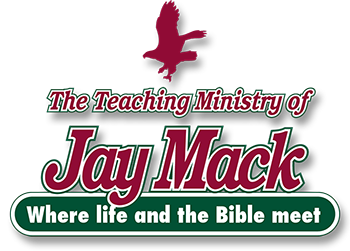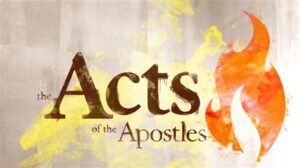Ah – Jewish Good News for Gentiles
Jewish Good News for Gentiles
As Sam Nadler relates in his book Messianic Foundations, we are complete in Messiah. Knowing Him brings about the transformation and satisfaction of our souls, which is true spirituality. Still, there are those stories of Gentiles who have converted to traditional Judaism, occasionally even using “Messianic Judaism” as a stepping-stone. Somehow, Yeshua was not enough for them. Decisions like this are made from poor discipleship, reflecting a lack of sound teaching in the Word of God. The completed work necessary for salvation and perfect fellowship with God has been accomplished eternally in Messiah, so that we might be a praise to the glory of His grace (Ephesians 1:14). In Messiah, people who are spiritually dead toward God, at the moment of faith are, by His grace, made spiritually alive; not by good works, but for good works (Ephesians 2:1-10).
Simultaneous to that reality of salvation, Gentile believers are made one with Jewish believers in Messiah (Ephesians 2:11-15). This unity of Jews and Gentiles into one new body is a spiritual revelation that was not previously known (Ephesians 3:1-13). Paul hopes that all believers might be strengthened in that love that they might be filled with the fullness of God (Ephesians 3:14-21). This revelation of Jewish and Gentile unity is important enough to explore further; we might dare say that it is the testimony of Yeshua in our lives.
Gentiles were “without”
Paul goes on to explain how the Gentile’s spiritual past was grim without Messiah: Therefore, keep in mind that once you – Gentiles of the flesh – were called “uncircumcision” by those called “circumcision” (which was performed by hand). At that time, you were separate from Messiah, excluded from the commonwealth of Isra’el and strangers to the covenants of promise, having no hope and without God in the world (Ephesians 2:11-12).
The non-Messianic community despised Gentiles as uncircumcised pagans. It was unacceptable for any observant Jew to associate with Gentiles. This is why Peter needed a vision from God to minister to Cornelius, a Gentile “God-fearer.” Mixing was simply not proper or good. Peter would later have to explain why he would go to a Gentile home, or face censure from the other Jewish believers (Acts 10-11).
Thus, the Gentile’s spiritual condition before coming to faith in Yeshua is characterized as “without.” The Gentile is without Messiah, separated from the true vine of Isra’el (John 15:5). The Gentile is without citizenship, excluded from the commonwealth of Isra’el, with no benefits in the community of God. The Gentile is without promises because all covenants of promise were made with Isra’el. The Gentile is without hope. It is like trying to breathe without air. Finally, the Gentile is without God Himself . . . they are in spiritual despair.
So lost and deceived was the Gentile world that they were generally unaware of their own spiritual condition, with no idea of any hope or promise. Though the Jews did have all these things, apart from the promise they were lost as well; in reality, all fall short (Romans 3:23).
Welcome to the Commonwealth
By faith in Messiah, the Gentile’s situation changes. While most of the ways it changes have often been well understood in traditional Christian commentaries, one area on which many seem to be unclear is “the commonwealth of Isra’el,” which includes Gentiles. Some have tended to spiritualize the matter, making the commonwealth of Isra’el equal to “the Church” in keeping with Replacement Theology (or Covenant Theology); whereas others have made it merely a political matter for the Millennial Kingdom in keeping with Dispensationalism (see the commentary on Revelation, to see link click Fi – The Government of the Messianic Kingdom). Some have also taken this phrase to imply that Gentiles become Israelites.
The word commonwealth is used a few times in the B’rit Chadashah, in Acts 22:28 (Greek: politeia), and Philippians 3:20 (Greek: politeuma). The idea of commonwealth should not be taken to refer to the nation of Isra’el. While the distinction may seem subtle, the Greek word for commonwealth is never used for “nation” (goy in Hebrew, ethnos in Greek). Thus, in Acts 22:28 Paul and a Roman soldier had the same rights because of shared Roman citizenship (politeias), even though they were not of a shared nationality (ethnos). The idea of commonwealth is that of a community that transcends national borders.
The core issue wasn’t exclusion from the nation of Isra’el, but from the life of the people of Isra’el, “the well-being of the community.” As believers in Messiah Yeshua, Jewish and Gentile people do not share the same nationality; however, they share the same rights, values, and relationship with the living God. Moreover, this is a reality that is happening now, not only when the Kingdom on earth is established at Messiah’s return. Paul is indeed saying that in times past the Gentiles were not fellow citizens, but that now, along with Jewish believers, they are!
As a Jewish nation, citizenship also included the idea of community, a way of life, and national life. In the United States citizenship is a legal issue, while the cultural issues are hotly debated. However, as a spiritual theocracy, Biblical Isra’el’s commonwealth included cultural, social, legal, religious and spiritual matters. Whereas for us, the issue of citizenship carries with it the idea of “rights and privileges,” there is even more expressed here: sharing fellowship, a common set of values and a way of life: So then you are no longer strangers and foreigners, but you are fellow citizens with God’s people and members of God’s household (Ephesians 2:19).
This is the Gentile’s true spiritual unity within the body of Messiah and identification with Isra’el; not being Jewish, yet they participate as a recipient of the promised Covenant (see the commentary on Jeremiah Eo – The Days are Coming, declares the LORD, When I Will Make a New Covenant with the People of Isra’el).
Consider an analogy to the modern Jewish state of Isra’el. The Law of Return is for those with Hebrew ancestry; those with at least one Jewish grandparent have the right to citizenship. However, in addition to this, the Gentile spouse of an Israeli citizen may make aliyah (immigrate) and receive citizenship as well. While this does not change her ethnicity, he or she might just enjoy Yom Ha’atzma’ut (Independence Day) and other national holidays, appreciating the state as much as, and possibly more than, those who were born in the Land.
In a similar way, though Isra’el’s deliverance from bondage in Egypt is a freedom celebrated by the Jewish people by the Jewish people, Gentile believers can enjoy Pesach every bit as much as any Jewish believer. They may find it more meaningful than Jewish people who do not know Passover’s fulfillment in Yeshua. How remarkably strange that Gentiles would be cut off, by anti-Jewish tradition, from remembering Messiah through Passover! How wonderful to see this pattern of hostility often reversed in our generation!
This inclusion in the commonwealth of Isra’el gives Gentile believers their relation to the Jewish people in service and witness: I say then, they did not stumble so as to fall, did they? May it never be! But by their false step salvation has come to the Gentiles, to provoke Isra’el to jealousy (Romans 11:11). The truth that Yeshua is the Messiah of Isra’el would be difficult, if not impossible, to communicate without showing the Jewish Biblical relevance that Yeshua brings to Jew and Gentile alike. Gentile inclusion into the Messianic way demonstrates God’s grace. But now in Messiah Yeshua, you who were once far off have been brought near by the blood of Messiah (Ephesians 2:13).
Being without the Messiah, excluded from the commonwealth of Isra’el, strangers to the covenants of promise, having no hope and without God in the world (Ephesians 2:12) is considered simply as Gentiles being far off. The terms far and near being used in Ephesians 2:13 and 17, allude to the offerings in the Temple. The word offering in Hebrew is korban, from the word karav, which means to approach or to come near to someone. In offering the proper sacrifice through faith that God would be acceptable in His sight, the worshipper came near or approached God. Though sin separated the worshipper from God, the offering appeased God’s wrath through faith so the one could draw near to Him. The Gentiles did not have the Temple and offerings to approach, so they were considered far off. Through sacrifices based on faith, Jewish people had “front row seats” for an audience with the Kosher King. The Gentiles, however, were not even in the building.
No Border Lines
It must be stressed, therefore, that it was not ethnicity or nationality that made the Gentiles far off, but rather their sin. Sin makes everyone far off. Even for Jewish people it was written: Your sins have made a separation between you and your God. Your sins have hidden His face from you, so that He does not hear (Isaiah 59:1-2). Through the atonement foreshadowed by the sacrificial system, Messiah paid the price to have you close to Him, and not far off. For He is our shalom, the One who made two into one and broke down the middle wall of separation. Within His flesh He made powerless the hostility – the law code of mitzvot contained in regulations (Ephesians 2:14-15a).
Being brought near by Messiah makes Gentile believers as near as Jewish believers are to God; however, it also makes Gentiles one with Jewish believers! How does God make us one? For He Himself is our peace. Messiah is Sar Shalom, the Prince of Peace (Isaiah 9:6); He is our peace with God (Romans 5:1), our peace of mind (Philippians 4:6-7). How is Messiah our Shalom in Ephesians 2:14? He is our peace offering. In the TaNaKh, an offering was at times referred to by its distinctive name. For example, the sin offering may just be called sin (Leviticus 4:20; Second Corinthians 5:21). Yeshua fulfills all of the sacrificial offerings, in that they all point to Him (see Ag – The Feasts, the Isaiah Avenue, and the Romans Road). Here in Ephesians, Paul refers to the peace offering as our shalom.
The shalom, or peace, offering indicated that there was complete peace with God – a completeness you would share with the other worshipers. The offering was actually eaten by those offering the sacrifice, and this brought them together in fellowship, making them one. That’s why the Scripture says that the Gentiles are joint heirs and fellow members of the same body and co-sharers of the promise in Messiah Yeshua through the Good News (Ephesians 3:6; Hebrews 3:14). By faith we trust in and take part in His sacrifice for our sins.
Paul writes of several partitions that Yeshua removes to make us one with Himself: the middle wall of separation, the hostility, and the law code of mitzvot contained in regulations (Ephesians 2:14b-15a). Outside the Holy Temple during the Second Temple period, there was a partition known as the soreg. It was a low wall surrounding the Holy Temple, which served as a boundary.  Beyond this point, entry was only permitted to Jews where who were not impure through exposure to death. The soreg featured signs, in a number of languages, that warned those unauthorized people against entering the area of the Holy Temple. The signs read: No foreigner may enter with the barricade that surrounds the Sanctuary and enclosure. Anyone who is caught doing so will have himself to blame for his ensuring death.
Beyond this point, entry was only permitted to Jews where who were not impure through exposure to death. The soreg featured signs, in a number of languages, that warned those unauthorized people against entering the area of the Holy Temple. The signs read: No foreigner may enter with the barricade that surrounds the Sanctuary and enclosure. Anyone who is caught doing so will have himself to blame for his ensuring death.
In the Temple area, there were actually several partitions: the outer wall, separating the Gentile proselytes from access to the court of the Jews; the inner wall, severing the Jewish people from entrance to the holy part of the Temple where the priests officiated; and even an inner veil that separated the priests from ADONAI. In Messiah, these have all been removed, and there is access for all into the presence of God! This means we are one, all together before Him. If, in Messiah, there is no dividing veil between Ha’Shem and man, then, if we are found in Messiah, there is no dividing wall between any of us as well. The grace that makes us one with the Lord makes us one with each other!
One New People, Reconciled and Restored
Hostility can mean hatred, animosities, discord or feuds. Even as the soreg represented the separation between Jews and Gentiles, we learn from Leviticus 18:24 that defilement caused God to cast out the nations. The idolatrous, pagan Gentile nations were considered defiled; therefore, any interaction with them was ceremonially defiling for Isra’el. This is why we read in Joshua 23:6-7, be very resolute to keep all that is written in the book of the Torah of Moses . . . so that you will not intermingle with these nations. Association with Gentiles would be like stepping in mud. The rabbis decreed that clods of dirt from Gentile lands were to be burnt on the possibility that they might ceremonially defile one’s offerings (Shabbat 15b). Using a play on words, the Talmud connects the hatred for the Gentile nations to the meaning of Sinai itself: For Rabbi Hisda and Rabbi Huna both said, “What is [the meaning of] Mount Sinai? The mountain whereon there descended hostility [sin’ah, literally hatred] toward idolaters” (Shabbat 89a). This mandated division between the people of God and the Gentile nations led to hostility.
By Messiah’s death, He put an end to the hostility that separated Jews and Gentiles (Ephesians 2:14). In reconciling us to God, all reconciliation has been provided. To what end did Messiah remove the hostility? He did this in order to create within Himself one new people from the two groups, making shalom, and to reconcile both to God in one body through the cross – by which He put the hostility to death (Ephesians 2:15b-16).
This new people relationship is only possible through the B’rit Chadashah, a spiritual unity that is beyond nationality. Even as ADONAI would unite the ever-wandering nations of Isra’el and Judah through the New Covenant (Jeremiah 31:31-34), so this same God unites Jews and Gentiles. There’s a new place of unity in Messiah. He is our refuge from the wrath of God, on the other hand, He is also the place of eternal unity with God, and with all other believers. The ground is level at the cross.
Paul says that this work of Yeshua results in making shalom. This shalom is more than a mere cessation of hostilities, it is the true fullness of our purpose, what was desired for us when He created us in His image. By relating to Ha’Shem we fulfill our calling to represent His eternal values of love and life. It’s not being transported out of the world, but living Him out where we are.
The death of Messiah restores us to God because His death removes the penalty, grief, and separation from sin. Those who were far off because of sin (which is everyone), may now be brought near to God. The hostility did not begin with the Torah, but in the Garden of Eden; the Torah merely brought the Adversary to the surface. From the very first sin, we have had hostility towards our Maker. Moreover, ADONAI’s righteous wrath against sinners reveals His hostility against sin. Therefore, Paul states: For the wrath of God is revealed from heaven against all ungodliness and unrighteousness of mankind (Romans 1:18a). From the Garden of Eden forward, restoration was needed (see the commentary on Exodus Bz – Redemption). In restoring us to unity with our Maker, Messiah’s redemption would restore believing humanity to one another as well.
The work of the cross is the destruction of everything that has caused disunity. All has been accomplished in Messiah, and in Him you (plural) have been made complete (Colossians 2:10). As Paul has written: Therefore, having been made righteous by faith, we have shalom with God through our Lord Yeshua the Messiah (Romans 5:1). You are at peace with God in Messiah, and you are complete in Him. Therefore, for anyone to attempt to improve on what God accomplished in Messiah, is to demean His perfect salvation for you (Galatians 5:6).
We are reconciled to God, and to each other by trusting in Messiah’s atoning work. Hence, there is one body (Ephesians 4:4); when you came to faith in Yeshua you were immediately made one with every other believer on planet Earth and in Heaven. By His sacrifice, Yeshua has removed the partitions, and by His grace, made us one.
Accepted for Access, Aiming for a New Abode
As a result of this unity, the Gentile believer in Yeshua has new privileges that cannot possibly be overstated. And He came and proclaimed shalom to you who were far away and shalom to those who were near (Ephesians 3:18). Paul notes that Isaiah promised this access: Shalom, shalom to those who are far and to those who are near (Isaiah 57:19). Those who are far are never too far for God to save; those who are near are never near enough not to need God’s grace and mercy. His message of forgiveness for sins and reconciliation with ADONAI is for both Jews and Gentiles, for all fall short of His glory (Romans 3:23).
Throughout Messiah’s ministry, He called people to Himself: those who were thirsty, weary and heavy laden, with the promise of rest and peace (Matthew 11:28; John 7:37). Even after Messiah’s death and resurrection, He preached this message through the apostles, as He does today by His Spirit through all who follow Him (Matthew 28:20; Luke 24:46-48; Acts 1:8). Please note that the three Persons of the Triune God are involved: for through Him (Messiah is the Door and the Way) we both have access to the Father by the same Ruach (Ephesians 3:19).7




